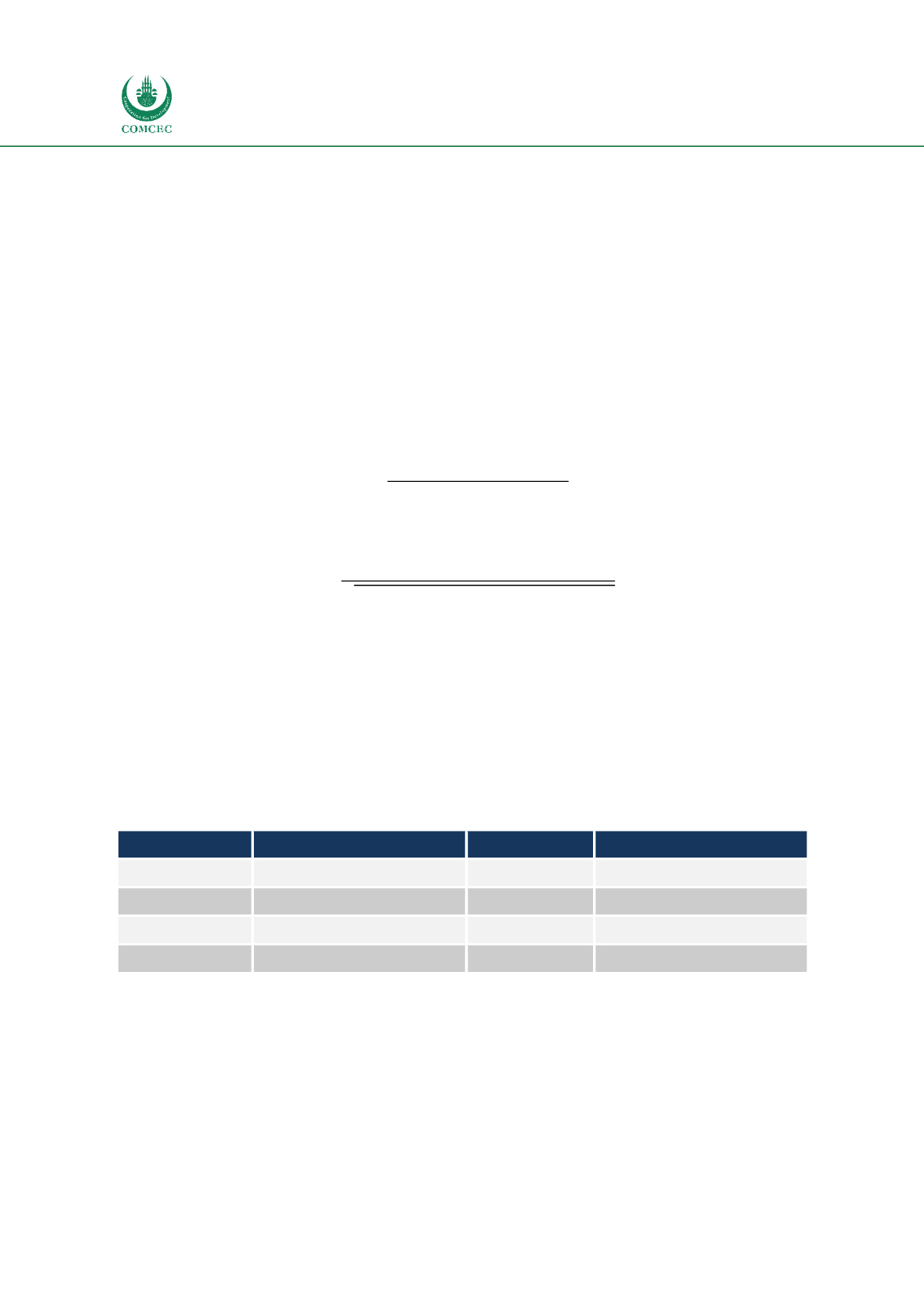

Facilitating Trade:
Improving Customs Risk Management Systems
In the OIC Member States
212
7.5
ANNEX V
7.5.1
Factors that influence the CRM Efficiency
In order to determine the mutual influence between the CRM factors, CRM variables important
for successful implementation of CRM system, and the interdependence between these variable
and other variables (rankings by international organizations related to trade facilitation as trade
costs and GDP per capita), an additional analysis was conducted joining all variables using
correlation analysis method. For a measure of association between two variables, researchers
rely heavily on a statistic called Pearson’s r, or the correlation coefficient. The Pearson’s
correlation coefficient (r) is a measure of the association between two variables and is used for
the measure of association between CRM variables important for successful implementation of
CRM system is explained below. The results of the CRM variable correlation cross matching is
presented in th
e Table 43The formula for Pearson’s r for two variables X and Y is:
=
∑( − ̅ )( − ̅ )
[∑( − ̅ )
2
] [∑( − ̅ )
2
]
Because the numerator of this formula is covariation of X and Y, statisticians think that it is
awkward to use and prefer following a computational formula.
=
∑ − (∑ )(∑ )
√[ ∑
2
− (∑ )
2
][ ∑
2
− (∑ )
2
]
Pearson’s coefficient has values between -1 and 1. The 0 value of this coefficient implies that
there is no association between the variables, while +1 and -1 imply total positive or total
negative association among variables. The positive correlation means that if one variable
increase (or decrease) also the second variables with which the first one have correlation
increase (or decrease). The negative correlation implies that increase in one variable will
decrease the second variable and vice versa. Of course, in the reality the results of these analysis
are between 0 < r < +1 и -1 < r < 0 for which there is no direct implication. Different authors,
present different interpretation of these values.
Table 43presents the interpretation of this
coefficient grouped in few intervals used in this research.
Table 43: Interpretation of the coefficient of correlation r
r > 0
Interpretation
r < 0
Interpretation
0,2-0,39
Low correlation
0,2-0,39
Low correlation
0,4-0,49
Medium correlation
0,4-0,49
Medium correlation
0,5-1
Strong correlation
0,5-1
Strong correlation
1
Perfect correlation
1
Perfect correlation
Source: Author’s compilation
Table 44presents the results for CRM variable that show a correlation as a result of cross-
matching of all variables with each other.
















